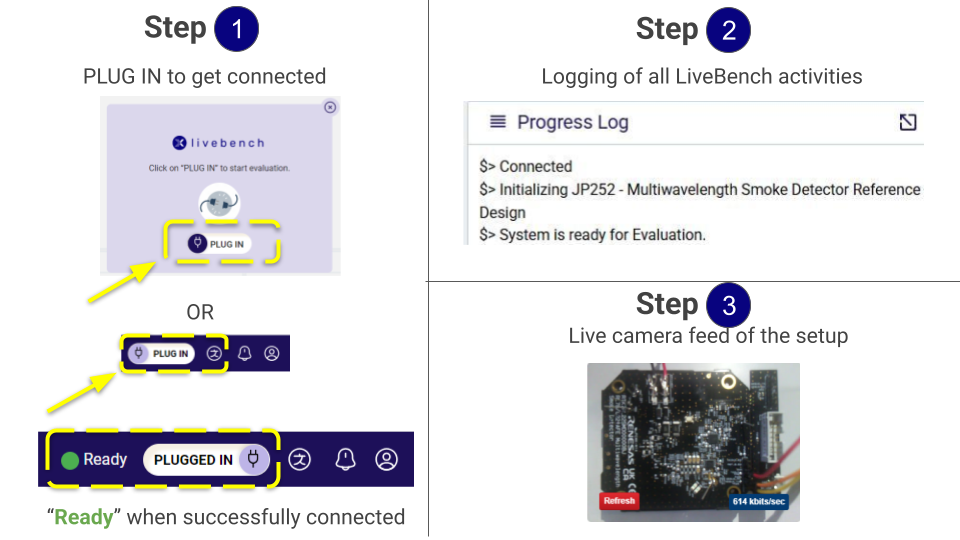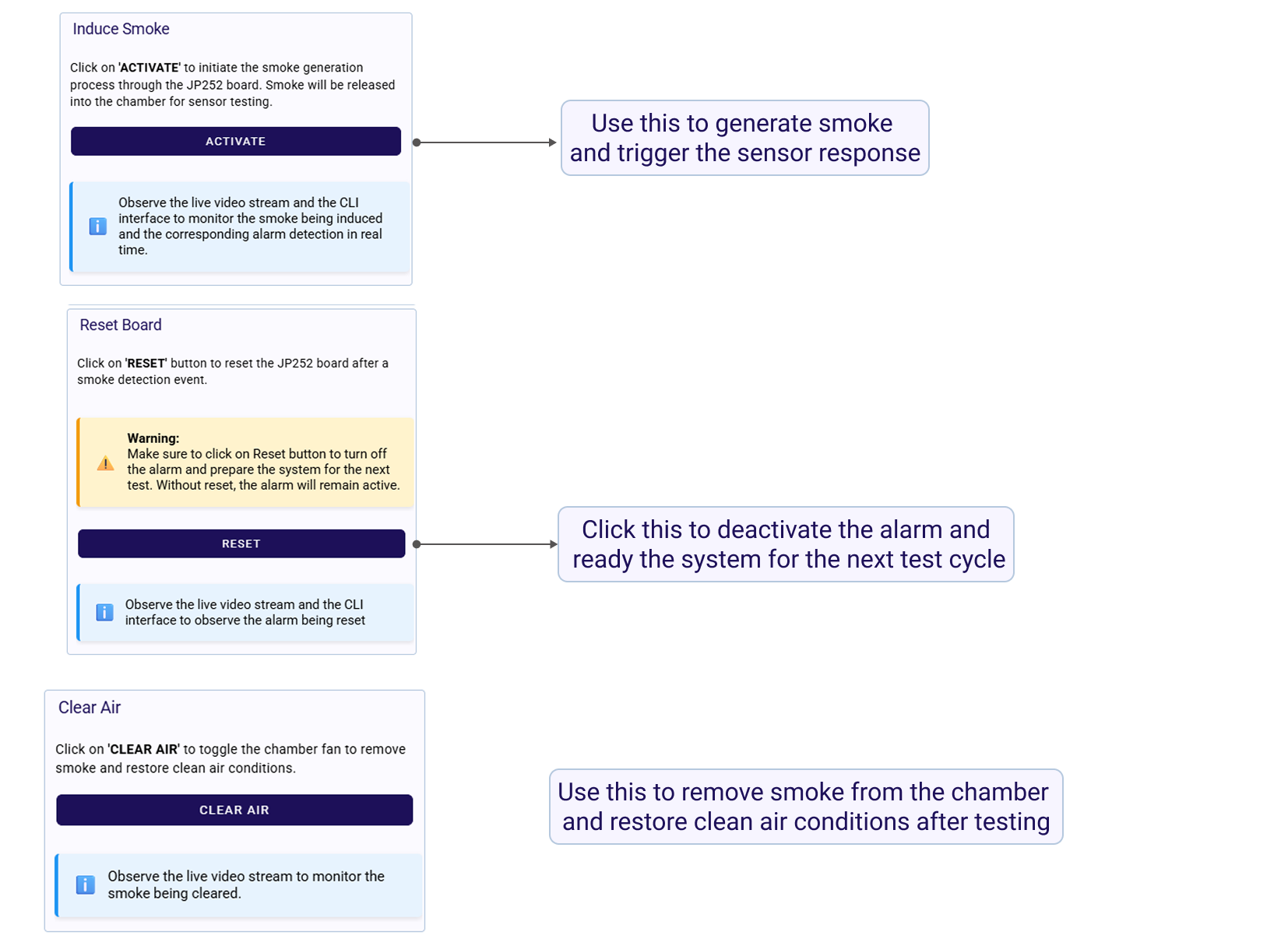¶ JP252 - Multiwavelength Smoke Detector Reference Design
¶ ℹ️ Introduction to the Board
The RL78/G22 Multiwavelength Smoke Detector Reference Design is a proof-of-concept (POC) solution designed for high-precision, low-power smoke detection using multi-wavelength light technology. It is built using the Renesas RL78/G22 microcontroller and RAA23910X Analog Front-End (AFE) IC, which enables photoelectric detection with infrared (IR) and blue LEDs for improved smoke classification and reduced false alarms.
The design targets both residential and commercial applications, complying with UL217/UL268 smoke detection standards.
.png)
¶ 💡 Board Features
- RL78/G22 low-power microcontroller.
- RAA23910X analog front-end with dual LED drivers and photodiode inputs.
- Dual-wavelength detection using IR and Blue LEDs.
- Integrated ADC, DAC, LDO, and SPI interface.
- Compact board size (75.5 mm × 95.5 mm × 1.6 mm).
- Low current operation with multiple power options.
- LED-based visual alarm and external signal output.
- Adjustable TIA gain and programmable detection thresholds.
- Supports UL217/UL268 standard testing conditions.
- Minimal external components for low BOM cost.
¶ ⚡ Photoelectric Detection Principle
- The smoke detection system works based on the principle of light scattering inside a dedicated smoke chamber. It includes multiple LEDs (Red Forward, Blue Forward, and Red Backward) and a photodiode arranged in such a way that direct light paths are blocked using shading blocks. As smoke particles enter the chamber, light emitted from the LEDs is scattered by these particles. This scattered light is captured by the photodiode through a dedicated light guide, ensuring only indirect light caused by smoke is detected.
- The use of Red and Blue LEDs allows the system to distinguish between different types of smoke based on their unique scattering characteristics. The photodiode output is amplified through a transimpedance amplifier (TIA) inside the AFE-IC, then digitized by the ADC of the RL78/G22 microcontroller. The overall optical layout including LED positioning, light guides, and shading blocks ensures reliable and selective smoke detection while minimizing false readings due to ambient or direct light.
.png)
¶ 📋 Practical Applications and Use Cases
- Residential smoke detectors.
- Commercial building fire alarm systems.
- Smart home fire and air quality monitoring.
- Battery-powered smoke sensing solutions.
- IoT-enabled smoke detection systems.
- Development and evaluation of smoke detection algorithms.
- Educational and research use in sensor technology.
- Industrial safety and early warning systems.
¶ 📝 Steps to Evaluate the Design

.png)

.png)
¶ 📑 Frequently Ask Questions
Q1: What wavelengths are used for smoke detection?
- The system uses 850 nm IR LEDs and 470 nm Blue LEDs for multiwavelength light scattering detection.
Q2: What is the typical input voltage range for the board?
- The board supports DC 24V to 40V, along with USB and debug power options.
Q3: How is smoke detected using photoelectric sensors?
- The system detects scattered light caused by smoke particles entering the smoke chamber.
Q4: How are false alarms reduced in this design?
- By comparing transmission ratios of IR and Blue LEDs, the algorithm differentiates real smoke from cooking nuisances.
Q5: What is the board's response time to smoke detection?
- Alarm response can occur in as little as 12 seconds depending on smoke type and intensity.
Q6: What communication interfaces are supported?
- The board supports SPI for AFE communication and UART for serial data output.